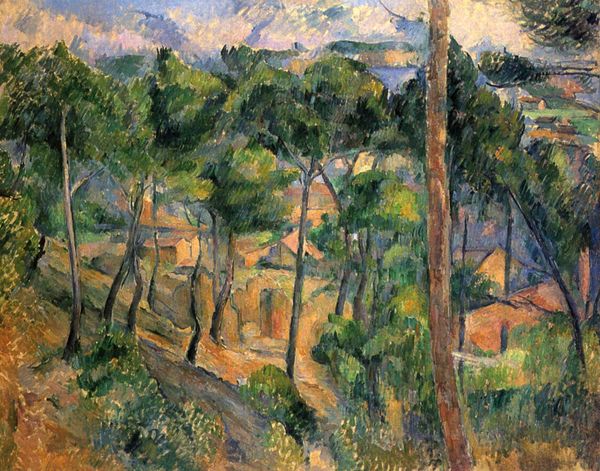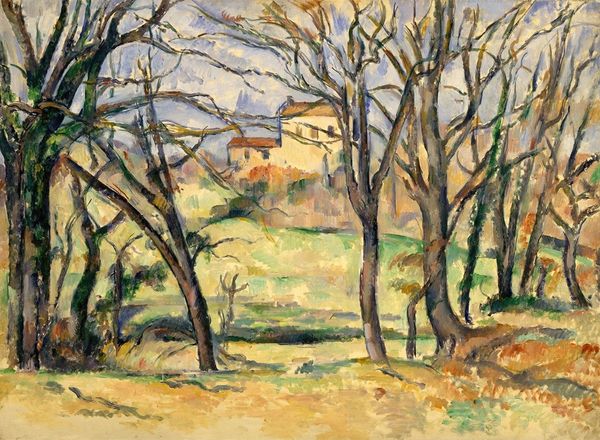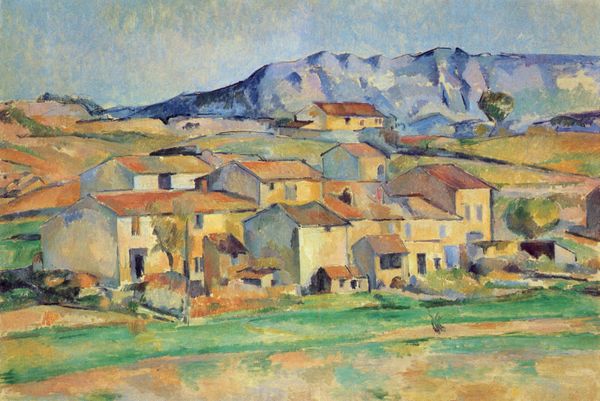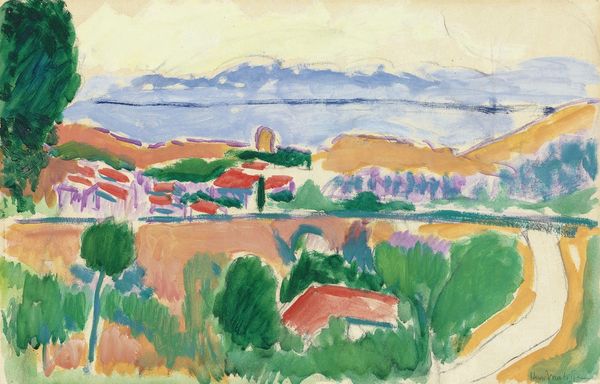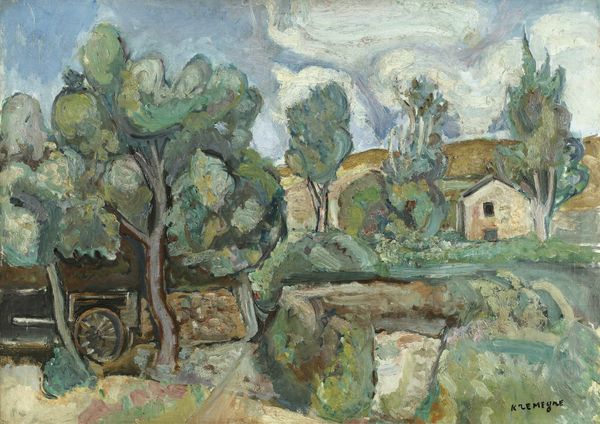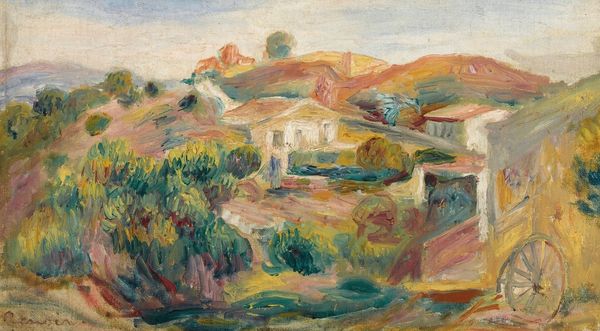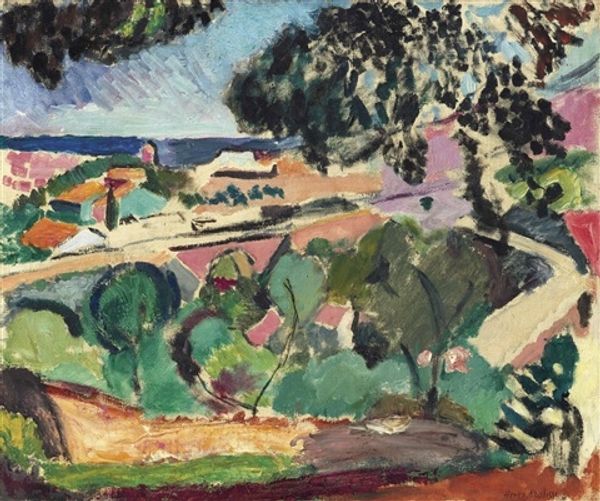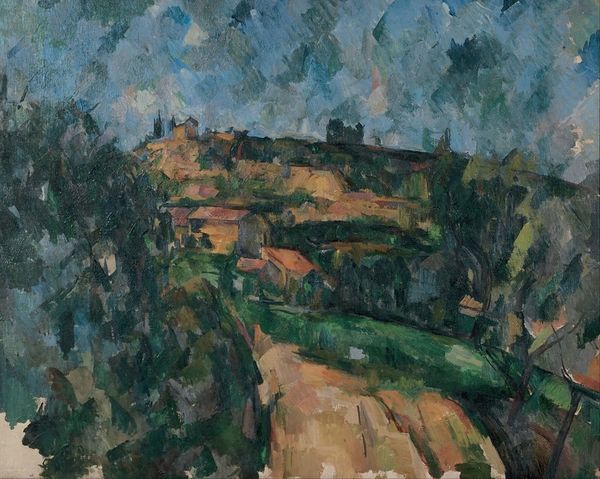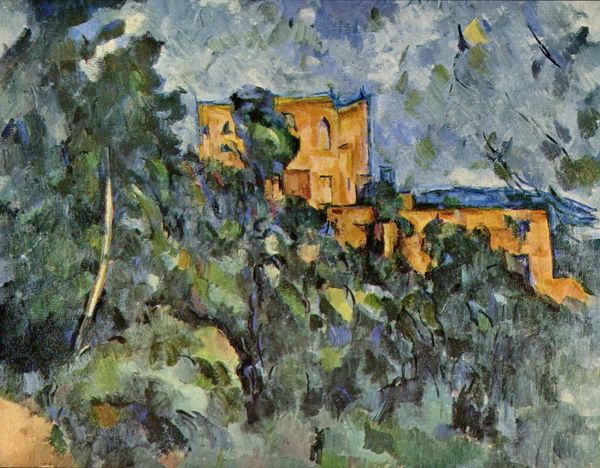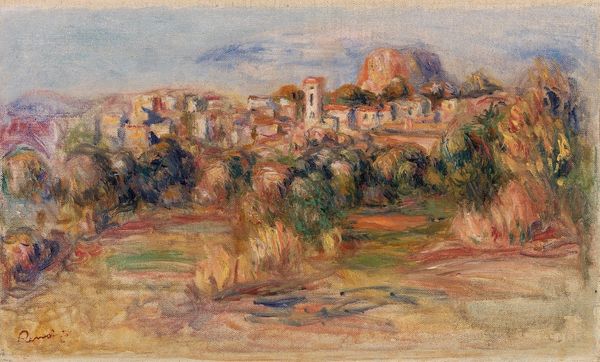
#
abstract expressionism
#
abstract painting
#
impressionist landscape
#
possibly oil pastel
#
handmade artwork painting
#
oil painting
#
fluid art
#
acrylic on canvas
#
watercolor
#
expressionist
Copyright: Public domain
Editor: So here we have Paul Cézanne’s "The Farm of Bellevue," created around 1892. It feels like the building is almost being swallowed by the landscape. What can you tell me about Cézanne’s approach here? Curator: Well, if we consider Cézanne's process, he wasn't just depicting a scene. He was *constructing* it. Note the visible brushstrokes. Each touch of pigment is a unit, building form, light, and space. It's not illusionistic. How does that materiality affect your understanding of “landscape” here? Editor: It's almost like the process of painting, the materiality of it, is just as important as what is being represented. It challenges that traditional separation, doesn't it? I also wonder if the location meant anything, if Bellevue farm was particularly interesting? Curator: Exactly! Cézanne lived and worked near Aix-en-Provence. This wasn't just a generic landscape; it was part of his everyday life, and that familiarity informed his work, but so too did his intense process. He reportedly worked on some paintings for years, returning again and again to a specific site. Consider also how his production was viewed and received in contrast to traditionally prized history painting, for instance. Editor: That repetitive engagement really comes across. There’s this deep connection to the location, almost meditative. Is it possible to see a link with earlier landscape traditions or is this distinctly modern? Curator: In terms of material culture, you could look at Courbet. And landscape traditions obviously are important but what's revolutionary here is the interrogation of what it means to *make* a landscape painting and who gets to define “art”. I mean how were Cézanne’s works viewed in comparison with crafts practiced by laborers outside a gallery setting? Editor: That tension between fine art and something more utilitarian is really interesting to think about in this context! Thanks! Curator: Indeed, and looking at the conditions of making lets us pose such questions!
Comments
No comments
Be the first to comment and join the conversation on the ultimate creative platform.

